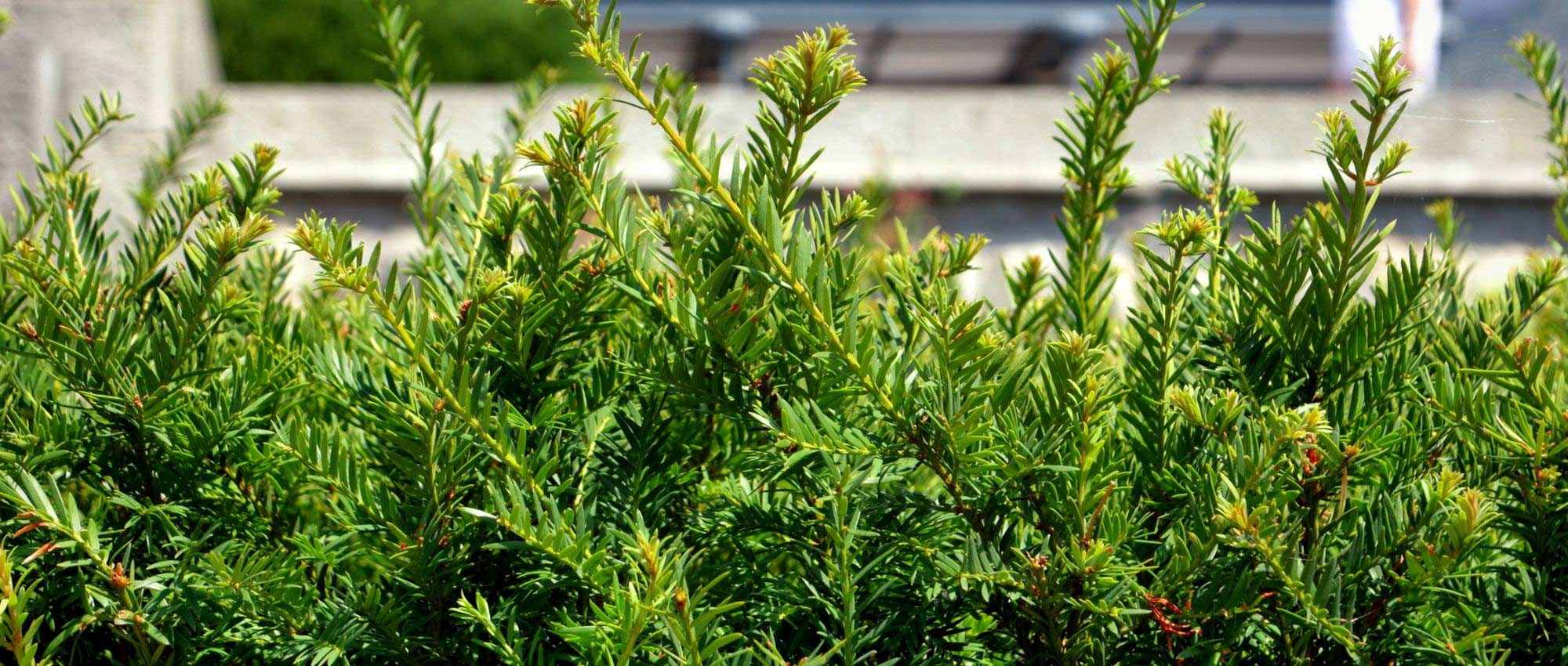
Pruning yew: when and how?
Our tips for successful pruning!
Contents
Yew, or Taxus baccata, is a conifer with dense, evergreen, dark-green foliage, making it ideal for creating topiary or clipped hedges. It grows slowly but can live for a very long time. It is very hardy, easy to grow and will grow almost anywhere! Moreover, it tolerates pruning very well, even severe pruning. This means, for example, it can be trained into topiary, used to form a hedge, or pruned into cloud shapes and incorporated into a Japanese garden. It is perfect for structuring a garden, defining a path, forming a border or creating a focal point. Discover all the possibilities Yew offers, and our tips for successful pruning.
When to prune yew?
Generally, prune it twice a year:
- first in early spring, in April, to give it the desired shape (formative pruning),
- then again in late summer, around August–September, to cut this year’s shoots and fine-tune the shape.
In any case, avoid pruning during periods of frost or extreme heat to avoid weakening it further.
Read also
Topiary: when and how to prune them?How to prune?
Start by letting yew grow vertically until it reaches desired height, then begin pruning at the top. Indeed, pruning the leading shoot risks slowing its growth.
Prune first dead or damaged branches, and those that protrude, seem poorly positioned, or shade the rest of the bush. Aim to harmonise the foliage so sunlight is well distributed over the plant.
To shape a topiary
For making topiary, indispensable tool is shear! You can also use a pruning shear for finishing touches or for precise work on branches that are harder to cut. We recommend disinfecting tools beforehand with 90% alcohol to avoid spreading disease. Also check tools are well sharpened.
Because of its naturally upright, conical habit, yew is ideal for cone, pyramid or spiral topiary. For more complex shapes, use wire templates available commercially.
- If you want a conical shape, place stakes all around the bush and tie them together at the top. Walk around the bush trimming shoots that protrude and stray from the conical form.
- For a spiral shape, start by pruning the bush into a cone. Then tie a string to the top and wind it downwards around the bush. Cut the spiral shape following the string as a guide.
- For a pyramid shape, place four stakes around the bush in a square and tie them at the top. Then shear each side so they meet the stakes, cutting straight between them.
In all cases, make small cuts each time, with fairly short blade movements. Don’t hesitate to return several times to the same spot. Topiary requires precision: better to remove a little material at each pass and take time to refine, than to cut roughly with a few large strokes. Regularly step back to judge overall shape of the bush.
Discover also our advice sheet on pruning topiary!
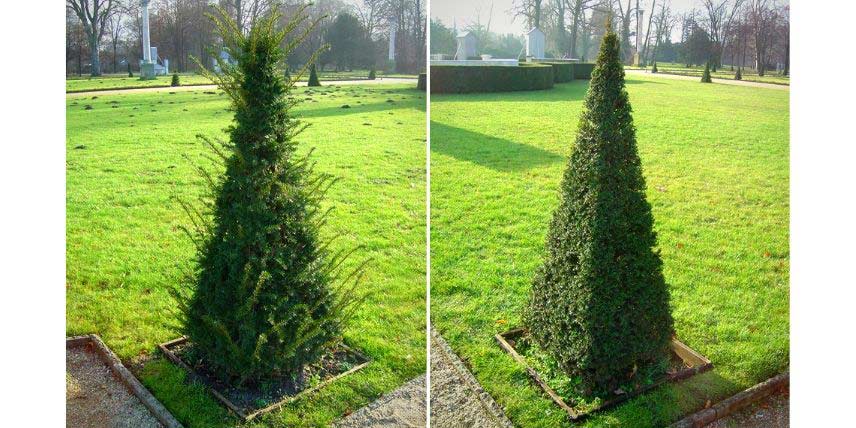
A yew pruned into a pyramid, before and after (photo Max Wahrhaftig)
To form a hedge
As hedges are by definition long and straight, most suitable tool is hedge trimmer. However, if hedge is small, shears may suffice.
You can use a guide line: plant two stakes, one on each side of hedge, and connect them with a string. This serves as guide to cut straight.
- Start by trimming top of hedge horizontally. Reduce height to level of last cut, or below if you want a low hedge. You can cut straight or create a slight rounded top.
- Then cut sides of hedge vertically. Trim lower part first, then work upwards progressively. Base of hedge should be slightly wider than top so sunlight is well distributed across foliage. This is known as “giving fruit”. That way base will not be shaded by branches growing above.
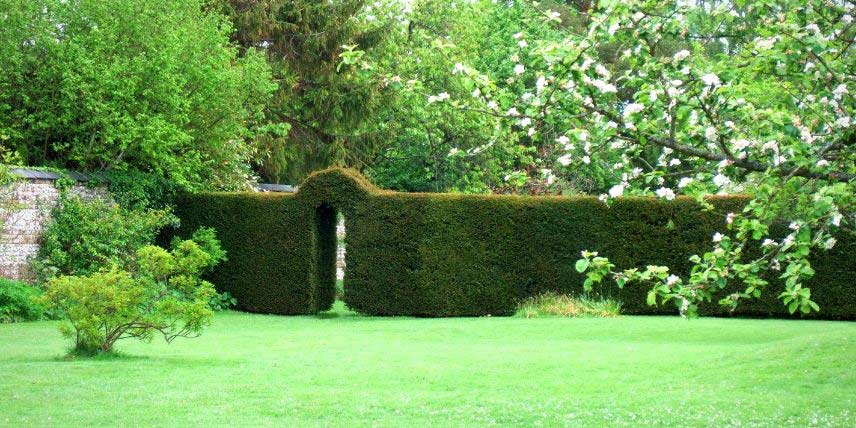
A yew hedge (photo Rowan Adams)
For cloud pruning
Cloud pruning, or niwaki, creates a harmonious effect by highlighting structure of the bush. It’s ideal for a Japanese, very zen atmosphere. It takes several years’ work to achieve best effect.
Idea is to expose structural branches to create voids, and to form dense pads of foliage at their ends. Balance is needed between bare branches and clouds of leaves, between void and mass. Tiers must be regularly spaced so light can pass between the clouds.
- Start by carefully observing overall shape of the bush. Identify structural branches you can emphasise.
- Remove dead or damaged branches, and those that grow too horizontally. This cleans the bush and removes unsightly branches.
- Choose good structural branches, preferably inclined and evenly spaced along the trunk. Along those branches, prune close in to emphasise them, leaving foliage only at their tips.
- Prune those tips into horizontal pads to densify foliage. Underside of clouds should be fairly flat and clear, while top is rounded, forming cushion-like shapes.
Throughout pruning, regularly step back to give bush a balanced, harmonious shape.
For more information, discover our advice sheet on cloud pruning or niwaki.
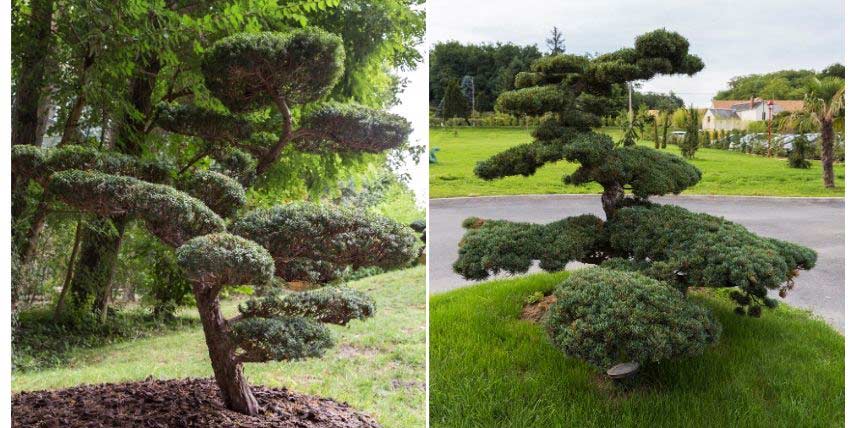
Two yews pruned into clouds (photos William Crochot)
Regeneration pruning
Unlike other conifers, yew tolerates severe pruning well because it can regrow on old wood, reforming new leaves on branches that have been denuded. This pruning is useful for yews that have become too large or too old. It allows regeneration and recovery of a dense, bushy foliage.
However, if yew is pruned every year, it should not need such pruning.
The case of fastigiate yews
Fastigiate varieties (such as Taxus baccata ‘Fastigiata Robusta’) have a narrow, tall columnar form and usually do not need pruning. But over time they can take a more open, airy habit, less compact. In that case it can be useful to tie foliage to keep it narrow, and cut branches that protrude or stray from the columnar shape.
Discover other Taxus - Yew
View all →Available in 2 sizes
Available in 2 sizes
Available in 4 sizes
Available in 2 sizes
Available in 1 sizes
Available in 1 sizes
Available in 2 sizes
Available in 2 sizes
Available in 1 sizes
Did you know?
Yew foliage contains a substance named Baccatine, which enables the manufacture of effective medicines against cancer. It is present in large quantities in young shoots. Thus, one sometimes sees initiatives by community groups, businesses or local councils offering to collect yew pruning waste to supply the pharmaceutical industry with raw materials, and harvest funds to fight cancer.
- Subscribe!
- Contents
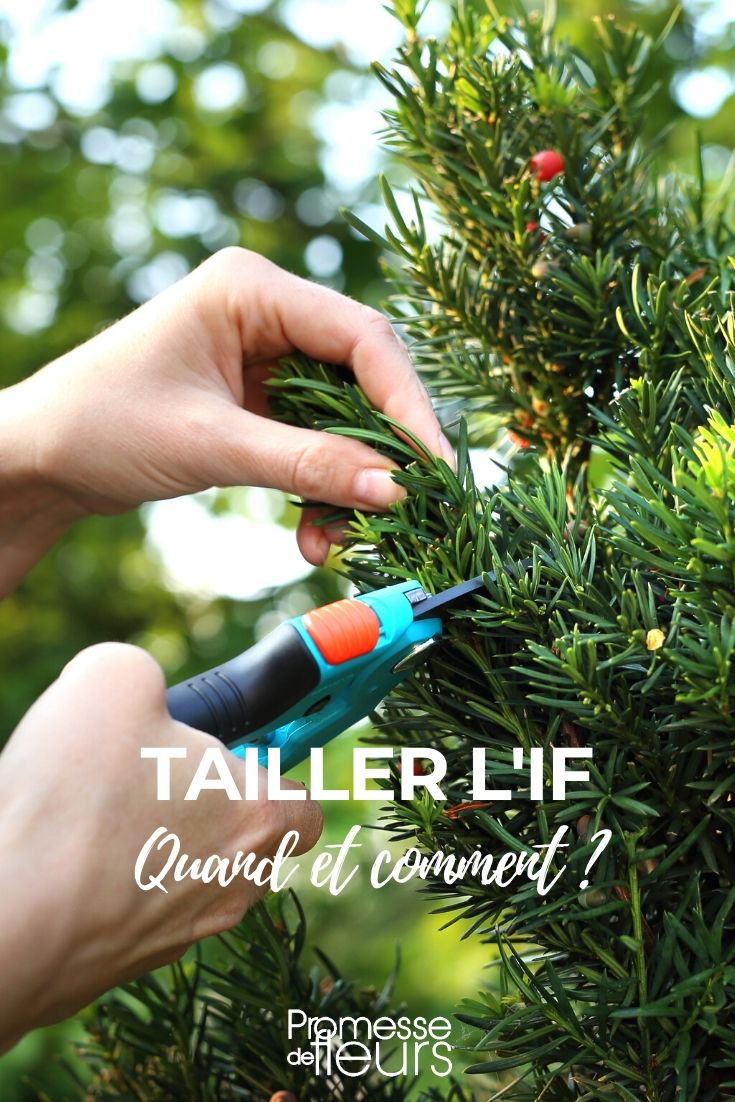































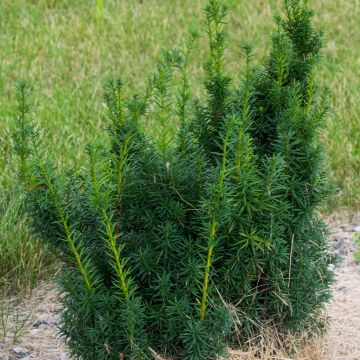
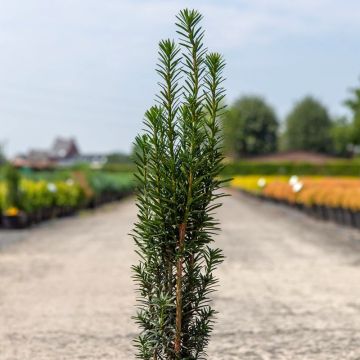
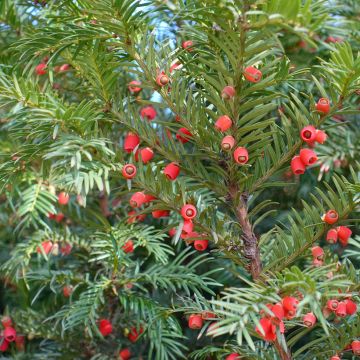
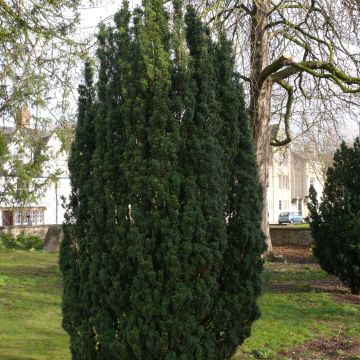
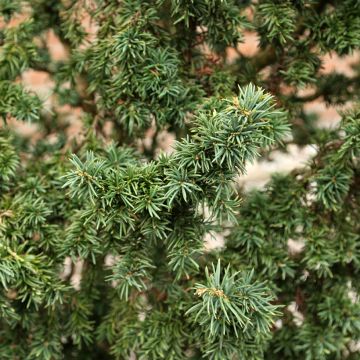
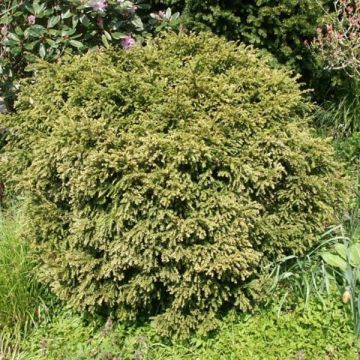
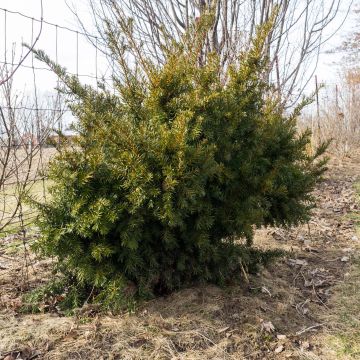
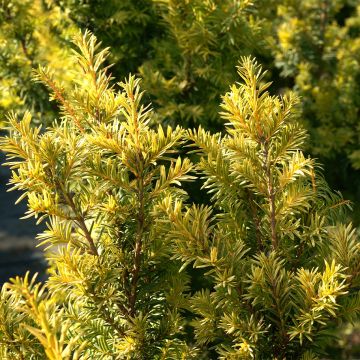
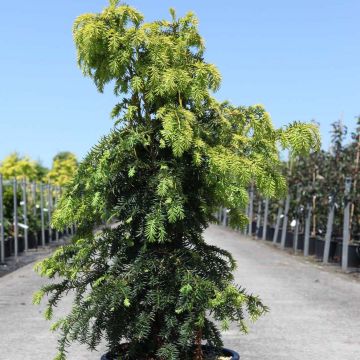
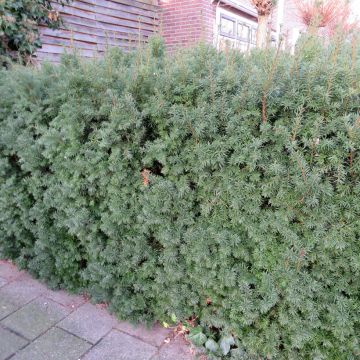
Comments